Elon Musk has people’s attention.
Is it because he’s making sexy electric cars? Sure.
Is it because he’s launching rockets that can land themselves? No doubt.
Is it because he recently became worth over $300 billion? Kind of.
But really, people are paying attention to Elon because his actual goals are even bigger than all that. Unlike most tech billionaires, he’s not just figuring out how to get us more addicted to our phones. Instead, he’s trying to establish a human colony on Mars, and launch humanity permanently into space.
And that’s pretty cool.
When this book was published in 2015, Elon Musk was worth $10 billion, Tesla was selling 50,000 luxury cars per year, and SpaceX had recently announced Starlink—a global space internet.
Today it is several years later and a lot has changed. Elon Musk is now the richest man on the planet worth $300 billion, Tesla is selling over 10 times as many cars at 500,000 cars per year, and SpaceX has not only put over a thousand Starlink satellites into orbit, but they’ve also carried over a dozen human astronauts to space.
To understand how Musk did it, we need to look back at his childhood in South Africa, his early startups in America, and how he thinks about the world. The best place to start is probably this biography. So get ready to learn some exciting lessons in this summary of the book “Elon Musk: Tesla, SpaceX, and the Quest for a Fantastic Future.”
About the Author
Ashlee Vance (official website) is an important tech writer for Bloomberg Businessweek, and before that The New York Times. When he began working on this biography, Elon Musk refused to help him, but Vance continued working for 18 months and completed over 200 interviews. Then Musk then changed his mind and sat down for many conversations. Vance believes it was because Musk respects resolve and persistence.
1. Develop Unstoppable Vision: During a tough childhood, science fiction inspired Musk’s futuristic goals
From a distance, Elon Musk looks like a character out of a science fiction novel or a comic book. He’s a technology billionaire, often described as a genius, that has a vision of how the world should look in the future, then goes and makes it real. That’s why he’s often compared to the Marvel character Tony Stark, a.k.a Iron Man. But how did Musk become who he is today?
The first big ingredient of Musk’s personality is a very high tolerance for risk. Reading this biography, there were a few places I can see this coming from:
- An unpleasant childhood. At school, Elon was a nerdy kid, bullied and beaten for almost 4 years. At home, his father was a source of unhappiness. But part of Elon seems to feel the adversity led to emotional resilience later on, and he worries his own kids aren’t being challenged enough.
- Growing up in South Africa. Elon was born in 1972 in the city of Pretoria. His father had a successful engineering business and the family’s house was nice and big, but there were many dangerous areas in South Africa. It’s also described as having a ‘hyper-masculine’ culture.
- His adventure-seeking grandfather. Joshua Haldeman was an eccentric entrepreneur who moved his family from Canada to South Africa in 1950. He flew a small airplane all over the continent, even to Europe and Australia. Maybe Elon’s risk-taking was inspired by his grandpa, or is even genetic?
The second big ingredient of Musk’s personality is his ambitious futuristic vision. So, what makes a boy dream of making advanced cars and going to Mars? The answer is simple: science fiction.
Yes, young Elon was a HUGE fan of influential science fiction authors like Isaac Asimov, Robert Heinlein and books like The Hitchhiker’s Guide to the Galaxy. They helped him to imagine fantastic new technologies that could make our lives faster and easier. He also read ‘too many’ comic books where the story usually involved saving the world.
I think we can often forget that science fiction and comic books used to be unpopular. Today we live in a world of pop culture that is very different. Like most of the recent Marvel and Star Wars movies have grossed over $1 billion, making them the most popular movies ever (BoxOfficeMojo). Maybe this is one good reason for us to hope we will have more people like Elon Musk working on great things in the future…
In the book, Musk shows self-awareness that some of his goals can sound crazy. (Like putting a human colony on Mars, for example.) In fact, one of the first things he said to the author of this book was “Do you think I’m insane?” But he wouldn’t be the first entrepreneur to feel this way…
Today Nike is the biggest sportswear brand in the world, but did you know the company was started by a random skinny college kid who loved running? He was a college kid named Phil Knight who had a ‘crazy idea’ that imported Japanese shoes could become popular in America. So he bought a suit, flew overseas, met with Japanese shoe company executives, pretended to be a serious American businessman, and signed a contract to distribute their shoes.
Later Phil wrote, “Let everyone else call your idea crazy… just keep going. Don’t stop. Don’t even think of stopping until you get there, and don’t give much thought to where ‘there’ is. Whatever comes, just don’t stop.” Well, the rest is history, because today everybody recognizes the name of HIS crazy idea: Nike.
Elon Musk is who he is because of an extreme tolerance for risk, which may have come from childhood adversity—unhappiness at home, bullying in school, and danger growing up in South Africa. He also has a great imagination to envision future technologies, which probably came from a deep interest in science fiction and comic books.
2. Choose to Be Extraordinary: Throughout his life, Musk was endlessly reading and learning
Now, it’s great to have persistence and vision, but to do what Elon Musk has done, I think you obviously need more. You need exceptional intelligence and talent. There’s no other way he could have invented multiple complex businesses on the cutting edge of new technologies. And most of the people who have been around Musk seem to agree that he is intellectually well above average.
Here are some signs of his early intelligence:
- Reading. As a kid, Elon Musk was a big reader. His family says he was reading all day long and he could remember a crazy amount of that knowledge. Musk says that in fourth grade he ran out of books at the school and local libraries, so he began reading encyclopedias from cover to cover.
- Studying. If he saw the point of a class, like physics and computers, then Musk would study and get good grades. Otherwise he would do enough to pass. He would often become so focused thinking about some mental problem, that he seemed to lose touch with the physical world.
- Coding. At 10 years old, Musk saw his first computer and was immediately captivated. He learned to code the BASIC programming language from a book in just 3 days. A couple years later, some simple video game code he’d written was published in a local magazine.
Elon Musk always saw America as the land of opportunity, so he left South Africa at the age of 17, basically as soon as possible. First he went to Canada, because there he was eligible for citizenship from his mother. Musk studied for 2 years at Queen’s University and met Justine, his future wife. Then he transferred to the University of Pennsylvania for a degree in economics and a degree in physics. The students also noticed that Musk understood things faster than the rest of them.
One of his former classmates believed that what separated Musk from everyone else was the intense level of interest he had towards whatever he was into.
After Musk graduated school, he didn’t stop learning. On the other hand, his interests only seemed to grow stronger. Multiple SpaceX employees interviewed in this book were impressed by how much Musk understands aerospace engineering. When they bring a problem to him, Musk often says “take it down to the physics.” Surprisingly, he taught himself a lot of rocket science from books. Later, he would educate himself by asking his employees at SpaceX or Tesla tons of questions.
So what does that mean for us? Do we need to be born with a super brain to be successful? Well, maybe not. Maybe a big part of intelligence is just choosing to be deeply interested and curious. I was watching some interviews with Musk and in one of them (Youtube) he said:
Yes, I think it’s possible for ordinary people to choose to be extraordinary. Don’t be afraid of new arenas. You can get a book, you can learn something, experiment with your hands, and make it happen.
– Elon Musk
This also reminds me of what was once said by Richard Feynman, a brilliant physicist who won a Nobel Prize and helped develop the first atomic bomb. In an interview (Youtube) he said, “You ask me if an ordinary person—by studying hard—would get to be able to imagine these things like I imagine. Of course! I was an ordinary person who studied hard. There’s no miracle people. It just happens they got interested in this thing, and they learned all this stuff. They’re just people. There’s no talent or special miracle ability to understand quantum mechanics […] that comes without practice and reading and learning and study. So if you take an ordinary person who’s willing to devote a great deal of time and study and work and thinking and mathematics, then he’s become a scientist.”
From a young age, Musk was always reading, until he ran out of books at the local libraries. He becomes incredibly interested in whatever captures his attention—from computer programming to rocket engineering. He believes we can all choose to be extraordinary by not being afraid to learn and experiment.
3. Outwork Everyone: In his startups Zip2 and PayPal, Musk put in crazy hours and total commitment
I’ve noticed that when Musk is asked how to be successful during an interview, he often recommends working 80 hours or 100 hours per week. Why? Because then you’ll accomplish 2 or 3 times more than someone working 40 hours per week. It’s simple math.
I’ve also noticed the journalist asking the question usually doesn’t look too happy about this answer!
Zip2
In 1995, Musk began his first startup called Zip2, which was like an online business directory that included maps and directions to the businesses. It may sound obvious today, but it was a very novel idea in those early days of the internet, when people still used these thick phone books called Yellow Pages to find local businesses.
With $28,000 from their dad, Elon and his brother Kimbal rented an office for Zip2 in Palo Alto, where Elon did the early coding and Kimbal formed a sales team. For 3 months, that small office was where the Musk brothers worked and slept. Even after they rented a separate apartment…
Elon often slept beside his desk on a beanbag, and was kicked awake by the first employee to arrive at 8 A.M.
Over time, Musk’s total commitment to Zip2 won over some investors, so they grew to have more employees and a larger office. Their product slowly transformed into an online classifieds app for large newspapers, and they landed large customers like The New York Times.
In 1999, Zip2 was sold for $307 million to Compaq Computers, and that meant Elon was worth $22 million at 27 years old. He splurged on a nice condo and an F1 sports car, but he put the majority of that money into his next startup…
X.com and PayPal
Just 3 months later, Musk began working on his next idea: an “internet bank” called X.com. Musk believed there was a huge opportunity to create a bank that was online, efficient and modern—but there were also endless regulations and obstacles to overcome. He began building X.com with some cofounders, employees and funds from his previous success.
In late 1999, the X.com website launched to the public. It was an immediate hit because of cool new features like being able to send money to someone’s email. It also didn’t hurt they were giving $20 to anyone who joined and $10 if you referred a friend. But they soon had strong competition from PayPal, a startup located just down the street, led by Peter Thiel and Max Levchin. After a few months, X.com and PayPal decided to merge into one company.
Everyone at PayPal worked hard, but no one could outwork Musk, who often came home at 11 P.M. … and kept working! (According to his ex-wife.)
In 2002, they were bought by eBay for $1.5 billion and Musk—the largest shareholder—grew his net worth to $250 million. And he was just getting started.
Elon Musk is often compared to Steve Jobs, the previous great icon of tech innovation. Jobs changed the world and countless industries with the iPhone, iPad, iPod, iTunes, Macintosh, Pixar, and the list goes on! But one thing people often forget is that few of his ideas were really new.
For example, there were plenty of digital music players before the iPod, but they basically sucked. What Steve Jobs contributed was a crazy level of perfectionism in the execution. He was intensely passionate about making products as simple as possible to use. He would make employees redesign small details dozens of times until he was satisfied.
And Jobs was incredibly hardworking, too. At one point he was CEO of both Apple and Pixar and he said, “I would go to work at 7 a.m. and I’d get back at 9 at night, and the kids would be in bed. And I couldn’t speak, I literally couldn’t, I was so exhausted.” But why would someone work so hard? I think his official biographer explains it best: “In the annals of innovation, new ideas are only part of the equation. Execution is just as important.”
To succeed, Musk often recommends working 80-100 hours per week. That’s how he succeeded in his first startups—with extreme execution. At Zip2, an online business directory, he often slept in the office. At PayPal, he would often work late into the night, eventually selling the company and earning $250 million.
4. Don’t Tolerate Excuses: At SpaceX, Musk’s management style is inspiring, but highly demanding
Musk was filthy rich from the PayPal sale. I bet most people back then expected him to get involved in another internet-related startup, like a new social media or food delivery app or whatever.
Instead, he began studying space rockets.
In 2001, Musk moved to Los Angeles because it was a center for the space industry. There was a non-profit organization called The Mars Society that was filled with scientists working for NASA and other aerospace companies. Musk began attending their events and talked about funding a project to send mice into space. He even visited Russia, looking to buy a used missile. It was during that trip his plan changed to starting his own private company, a company that would launch space rockets at a much lower cost than anyone else.
That is how in 2002, Space Exploration Technologies (or SpaceX for short) came into being. Musk rented an old warehouse, painted the inside white from top to bottom, then began hiring engineers and scientists, usually recent graduates.
To pull off this almost-impossible new business, Musk took on a unique management style:
- He was inspiring. The ultimate goal of SpaceX is to establish a human colony on Mars. This huge future goal is incredibly exciting for the young engineers and scientists SpaceX wants to attract, so it gives them an advantage in hiring great talent. Especially when compared to their boring, bureaucratic competitors.
- He was demanding. The early employees at SpaceX often worked 12 hours per day, 6 days per week. By 2005, they had created many of the rocket parts. They began setting up a rough launchpad on a tiny, tropical island near Hawaii. The young men had to basically live on the very humid island for 6 months.
- He was patient. In 2006 and 2007, the first two test launches failed, explosively. Musk reassured his team that failure was normal, for every company or nation who’d tried to launch rockets. He only asked they learn from each failure, and propose a solution to fix the problem next time.
- He was ruthless. Many past employees mentioned that Musk would quickly fire people who didn’t seem to be putting in all their efforts. He simply wouldn’t tolerate laziness or excuses. But some people criticized him for treating workers without loyalty, like disposable equipment for reaching company goals.
Musk moved to LA and created SpaceX in 2002, a startup that would launch rockets more cheaply than anyone else. His grand vision of colonizing Mars helped attract engineers that were talented and dedicated. They worked for months on a tiny island but suffered two failed rocket launches in 2006 and 2007.
5. Forget the Odds: Believing SpaceX was important helped Musk survive extreme uncertainty and stress
In 2008, SpaceX tried to launch a rocket for the third time, and failed again. This failure was more serious because they had been carrying an expensive satellite for the Air Force, which was destroyed. Some SpaceX employees were crying, but Musk put on a positive face and reassured them everything would be okay.
However, privately Musk was under extreme pressure:
- Financial pressure. He’d already spent more than $100 million without a successful launch. If their next launch failed, they probably wouldn’t have enough money to try again.
- Marital pressure. On top of this, he was going through a divorce, separating from the mother of his 5 children, while working 7 days a week.
- Physical pressure. As a result of the stress, his body weight swung up and down. His next girlfriend Riley said he “looked like death” and would sometimes be screaming in his sleep.
Later on, people close to Musk would say his most unique ability is being able to remain focused and continue working towards his goals, despite total uncertainty and emotional pain. How does he do that? I think I found one secret to Musk’s total dedication in another interview (Youtube), when he said:
When something is important enough, you do it even if the odds are not in your favour.
Elon Musk
Then something amazing happened.
In late 2008, SpaceX finally succeeded in putting a Falcon 1 rocket into orbit. A small startup, led by Musk, had accomplished a tremendous feat, something that in the past had often required the resources of entire countries. They had an emotional celebration, but were soon back to work, planning an even bigger rocket called the Falcon 9. Then they won a $1.6 billion contract with NASA to resupply the International Space Station, funds that ensured SpaceX would survive.
Is Elon Musk just crazy and very lucky? That’s a fair question.
For most of his projects, Musk has unrealistically optimistic deadlines. For example, he said it would take 15 months for SpaceX to launch their first successful rocket, but it eventually took over 6 years! Some people may see this tendency to underestimate the difficulty of a project to be one of his personal flaws. On the other hand, maybe it is why he is able to take on such enormous challenges without melting down?
And Musk is certainly not blind to the possibility of failure. Near the end of the book, he describes “a nagging feeling” that his businesses could still fail. And he was raising extra money just in case something went wrong, like a few failed launches or an unlucky car recall. So I think this quote from him really does sum it up:
When something is important enough, you do it even if the odds are not in your favour.
Elon Musk
In 2008, SpaceX was on the edge of collapse, Musk was getting divorced and under extreme stress. But he remained focused and working 7 days a week, despite the high chance of failure. In 2008, SpaceX succeeded in launching a rocket and secured their future by winning a huge contract with NASA.
6. Find Your Opening: The electric car market looked hopeless, but Tesla succeeded with the right strategy
Many people would think starting a business to launch space rockets is crazy enough, but Musk didn’t stop there. No way! At the same time, he decided to go disrupt the huge automobile industry. At the same time!
Musk had been interested in electric cars for a long time, despite most ‘experts’ believing the idea had become a dead end. In 2004 he met Martin Eberhard and Marc Tarpenning, two other entrepreneurs who had created Tesla Motors to pursue that same passion. (They had become wealthy after selling their last startup, the Rocket eBook Reader, for $187 million.) Musk quickly became Tesla’s largest investor and chairman.
Why did Tesla’s co-founders believe they could succeed with electric cars, when most big automakers had given up? Two big reasons: a growing new type of consumer and new batteries.
- First, a growing group of car buyers were both eco-conscious and wealthy. The founders of Tesla noticed that it was people with unusually high incomes that were buying cars like the Toyota Prius hybrid and the GM EV-1 early electric car. Among a certain group, “green technology” was becoming like a fashionable status symbol, and they believed a beautiful luxury car could appeal to this group while providing Tesla good profit margins. (They were planning to make cheaper cars for mainstream buyers later on.)
This idea of starting with a small or niche market when introducing a new type of product is nothing new. Most of the technologies that we all take for granted began as items that could only be afforded by wealthy people. (Like personal computers or airplane travel.) Then over time the cost was lowered to the point we could all afford it.
In fact, Peter Thiel, who was another co-founder of PayPal, has a great quote about this: “The perfect target market for a startup is a small group of particular people concentrated together and served by few or no competitors.” (And I highly recommend Thiel’s book if you are interested in startups or business strategy.)
- Second, lithium ion batteries had improved greatly. These are found in most of our modern electronic gadgets. The founders of Tesla believed these batteries finally made it possible to build an electric car with great range, power, and recharging speed. The best part was these batteries would continue to get better and better into the future. In fact, a year before Tesla, Musk had given money to an engineer named JB Straubel so he could begin designing lithium ion battery packs for cars.
Jeff Bezos, the founder of Amazon, has said entrepreneurs should “Never chase the hot thing… you need to position yourself and wait for the wave.” When Bezos started Amazon, the internet was not yet well known, but it was growing fast. He positioned himself to catch the first big wave of interest in the new technology, just like Musk did later on with electric cars.
This strategy requires a more long-term perspective, another idea Jeff Bezos has talked about a lot. He said, “[Most companies] want to work on things that will pay dividends in two or three years, and if they don’t work in two or three years they will move on to something else. […] that is why we are different.” Both Bezos and Musk have shown incredible patience, they’ve been willing to lose money for years, in order to build a stronger company.
Learn more in our summary of The Everything Store by Brad Stone
Tesla’s first car would be a super-fast luxury sports car named the Roadster. They began with the outer shell of an existing car named the Lotus Elise and had the first prototype ready in a few months. But getting the car into production for consumers took a lot more time. They kept running into problems with the electrical parts, the cars were costing way too much to make, and the company was spending $4 million per month with zero revenue. There were 4 very difficult years that Tesla barely survived. (And this was the same time SpaceX was almost bankrupt too!)
But following the motto of “fail fast,” Eberhard and later Musk managed to fix the problems one-by-one. And in 2008, the first Roadsters began shipping to customers, proving that an electric car could be a great car AND successful in the marketplace. They sold about 2,500 Roadsters over the next four years, but really it was just a proof of concept for their next car…
The Tesla Model S was released in 2012. It was a beautiful luxury sedan, with radical new features like a 17-inch touchscreen, automatically extending doorhandles, and an always-on internet connection. The car won many top ratings and awards for safety, performance and innovation. Then Tesla announced a network of Superchargers where Model S owners could charge their cars for free. Then they announced their first profit ever. Altogether, the large carmakers were shocked, most of them assumed Tesla would fail. Today it seems like all of them are rushing to release their first electric vehicles, no doubt thanks to Tesla and Elon Musk.
In the early 2000’s, most big automakers believed electric cars were impractical. However, Tesla’s founders saw opportunity because of a growing group of wealthy ‘green’ consumers and better lithium ion batteries. Their 2008 Roadster was really just the first part of their strategy, so they could learn how to build more mainstream cars like the Model S and later Model 3.
- Focus deeply on one thing for 2 hours. Ideally you would make this a daily habit. (For example, there are some great coding tutorials on Youtube.) Remember one of the biggest things that separates Musk is how deeply interested he becomes in things. Unfortunately, we live in a world of shallow, dopamine-driven stimulation. It’s a trend we need to fight against to be successful. Musk makes sure his own kids “read more than they play video games.”
- When pointing out a problem, also suggest a possible solution. This makes you look more competent at work, and makes life easier for your family and friends. Musk’s top employees at SpaceX know that he is very patient when accidents happen, but “what Musk would not tolerate were excuses or the lack of a clear plan of attack.”
- Read or listen to one science fiction book. Many entrepreneurs and scientists have found useful ideas in science fiction. Elon Musk and Jeff Bezos both love authors like Isaac Asimov and Robert Heinlein. Another example: Many pioneers of cryptocurrency loved the book Cryptonomicon (Amazon), which imagined a future full of encryption and digital money.


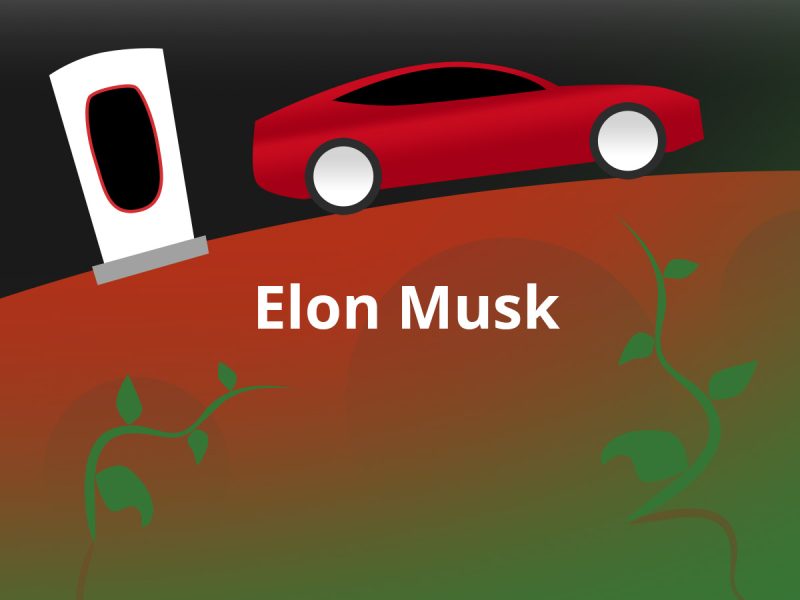



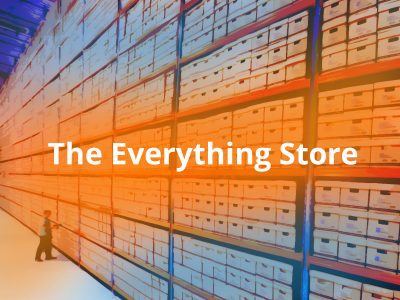

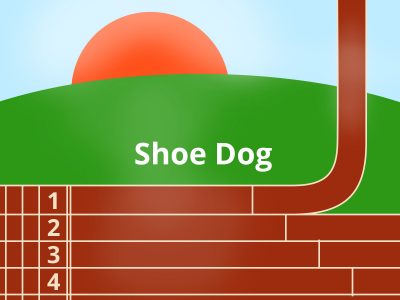

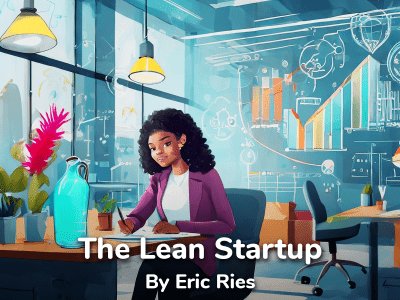
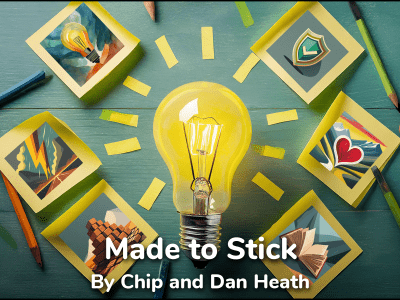







Community Notes